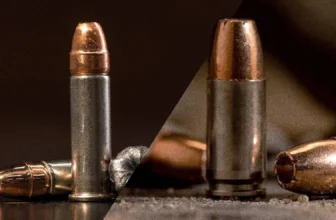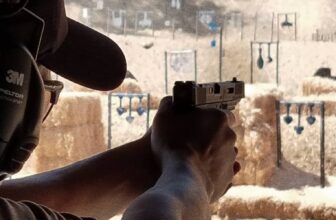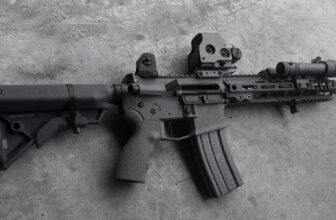Shooting ranges have been a popular destination for firearm enthusiasts for many years. However, there are two main types of shooting ranges that you may encounter: indoor and outdoor. While they both offer a place to shoot firearms, there are some significant differences between the two. Read this blog post to find out some interesting facts about each and find out more on how to always be range ready…
Shooting ranges have been around for centuries. However, the concept of shooting ranges as we know them today began to take shape in the late 19th century. The National Rifle Association (NRA) was founded in 1871, and one of its primary goals was to promote the safe use of firearms.
In the early days, shooting ranges were typically located outdoors and consisted of simple targets set up in open fields. However, as shooting became more popular and organized competitions began to take place, shooting ranges became more sophisticated. Indoor ranges were constructed to provide a controlled environment for shooters, and target systems became more advanced.
Today, there are shooting ranges of all types and sizes, catering to everyone from casual shooters to competitive marksmen.
Indoor Shooting Ranges
Indoor shooting ranges are typically located inside buildings and provide a controlled environment for shooters. They are often used for target practice, firearms training, and competition shooting.
One of the main advantages of indoor shooting ranges is that they provide a safe and controlled environment for shooting. The targets are typically stationary, and the range is designed to prevent bullets from leaving the shooting area.
Indoor ranges are also popular because they allow shooters to shoot in any weather condition.
Shooters can practice their marksmanship regardless of rain, snow, or extreme heat.
Another benefit of indoor shooting ranges is that they often have sophisticated target systems. These systems allow shooters to program different scenarios and target movements, providing a more challenging shooting experience.
Outdoor Shooting Ranges
Outdoor shooting ranges, on the other hand, are typically located in open areas and offer a more natural shooting experience. Outdoor ranges are often used for hunting practice and long-range shooting.
One of the primary advantages of outdoor shooting ranges is that they offer a more authentic shooting experience. Shooters can practice their skills in a natural environment, which can be more challenging than shooting in a controlled indoor environment.
Outdoor ranges are also typically larger than indoor ranges, which allows for more flexibility in shooting positions and distances.
However, outdoor shooting ranges do come with some disadvantages. Weather conditions can be a major factor, with rain, snow, and extreme heat affecting shooting conditions. Additionally, outdoor ranges may not be as safe as indoor ranges, as there is a greater chance of bullets leaving the shooting area.
In conclusion, both indoor and outdoor shooting ranges have their advantages and disadvantages.
Indoor ranges offer a controlled environment for shooting, while outdoor ranges provide a more natural shooting experience. Ultimately, the type of range you choose will depend on your personal preferences and the type of shooting you wish to practice.
No matter what type of shooting range you choose, it is important to always practice proper firearm safety and follow all range rules and regulations. When it comes to always being shooting range ready – you can assure you are in the right place. Target Sports USA offers an AMMO+ membership program that provides a number of benefits for ammunition buyers. Members can enjoy free shipping on all orders, discounted pricing on many products, and early access to new products.
We offer a wide range of ammo at the best possible price. Visit our website today to find out more. Check out this the list of most popular calibers in stock ( all eligible for a discount) :






